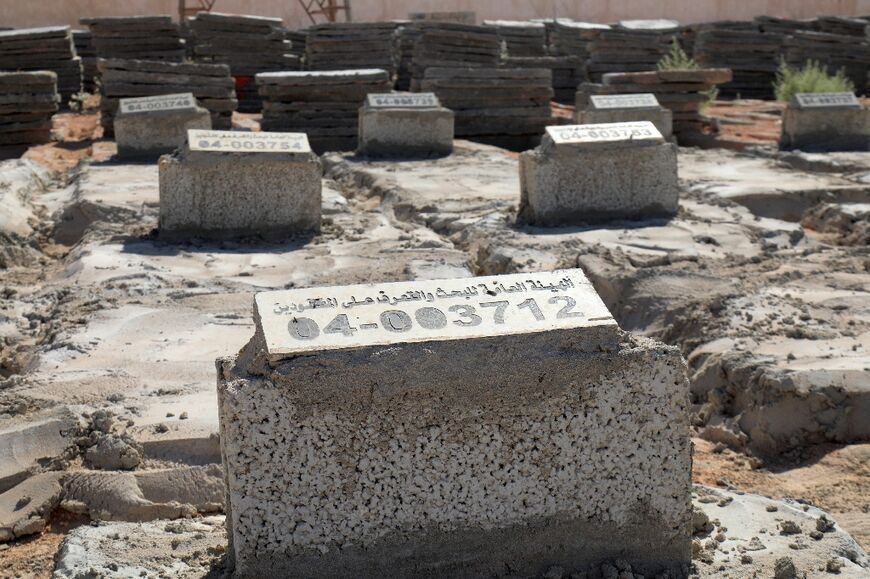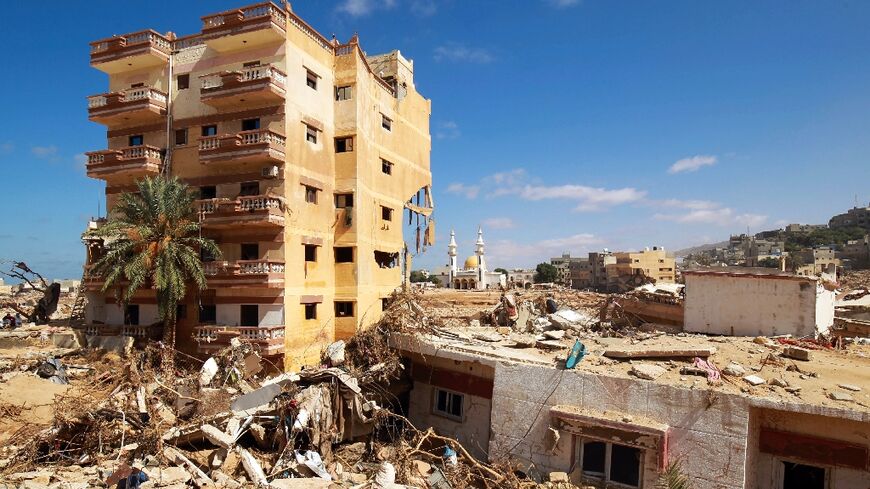'Essential services' still sparse in Libya's flood-ravaged Derna

One year after a wall of water swept through eastern Libya's coastal city of Derna, killing thousands and causing devastation, reconstruction is under way but essential services are lacking, NGOs say.
On September 10, 2023, extreme rainfall from hurricane-strength Storm Daniel caused two dams to burst inland from Derna, which lies some 1,300 kilometres (800 miles) east of the capital Tripoli.
The flooding killed nearly 4,000 people, left thousands missing and displaced more than 40,000 others, according to the United Nations.
Near a now dry valley where people and rubble were swept away a year ago by the rushing floodwaters, cranes and trailers are busy.
Once home to around 120,000 inhabitants, Derna has become a vast construction site in which homes, schools, roads and bridges are all being rebuilt.
The whitewashed facades of the city's buildings had long contrasted with the blue of the Mediterranean. Today Derna is bleak with cinder blocks and the grey concrete of unfinished buildings.
"We expected things to go better," said Mohamed Azouz. "Work is moving slowly in our street, one of the worst-hit areas.
"We stayed on the street for a month, a month and a half" after the disaster, he added.
Libya is still grappling with the aftermath of the armed conflict and political chaos that followed the 2011 NATO-backed uprising that toppled long-time dictator Moamer Kadhafi.
- 'Precarious conditions' -
The country is now divided between an internationally recognised Tripoli-based government in the west, led by interim Prime Minister Abdulhamid Dbeibah, and a rival administration in the east backed by military strongman Khalifa Haftar.
Belgacem Haftar, one of the field marshal's six sons, has been the figurehead for reconstruction in Derna.
Last week, he told reporters including from AFP that 70 percent of reconstruction projects in Derna had been completed.
Haftar said 3,500 homes have been rebuilt, and maintenance work had been carried out on the city's power grid and in schools.
But on Tuesday, in a joint statement with other groups including the Norwegian Refugee Council, the International Rescue Committee said the flooding "has left critical gaps in essential services" even a year later.
"Numerous families continue to face challenges in obtaining essential necessities, with many displaced people living in precarious conditions," the statement added.
It noted that many people still have no access to clean water.
It said healthcare facilities faced challenges "including poor water quality, inadequate sanitation, and hygiene supply shortages, putting both patients and workers at risk".
It also said "health risks and shortages of essential medicines persist, particularly for women and children".
"Psychosocial support, especially for children, needs scaling up as health workers continue to see cases of trauma, grief, and anxiety," the group added.
- Contested figures -
The real number of those killed in the disaster may never be known.
Families of some victims have contested the death toll announced by officials in the east.
Authorities put the number of dead at around 3,800 people -- based on the number of bodies buried -- but the families believe many more died.
Walking alongside tombstones in a flood victims' cemetery in Derna, Achraf Mansour, a volunteer with the Libyan Red Crescent, told AFP the main challenge had been "recording deaths".
Kamal al-Siwi, head of the General Authority for the Search and Identification of Missing Persons, said that as of September 5, "we had 3,028 reports of deaths from families".
This "added to the bodies found in submerged homes, in the sea or on the banks of the wadi, making up a total of 3,734 victims".
Siwi said this "difference of 700" bodies represents cases not reported by relatives, some of whom live outside the country.
Far higher tolls have been reported by different NGOs, officials, and media outlets.
Libya analyst Anas El Gomati told AFP that a death toll of "14,000 to 24,000" was more plausible.
He said authorities in the east have been "minimising the death toll (in order to) minimise their culpability".
Siwi said he had "heard frightening figures with media reports of between 50,000 and 100,000 deaths", which he believed were unreliable.
Many victims of the tragedy have not been identified.
In the cemetery where they are interred, rows of tombstones do not bear names. Instead, the people buried there have only numbers, victims of the flood whose identities remain unknown.








